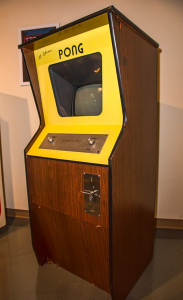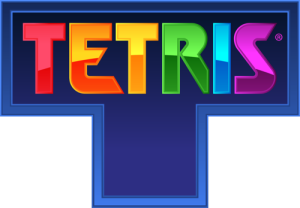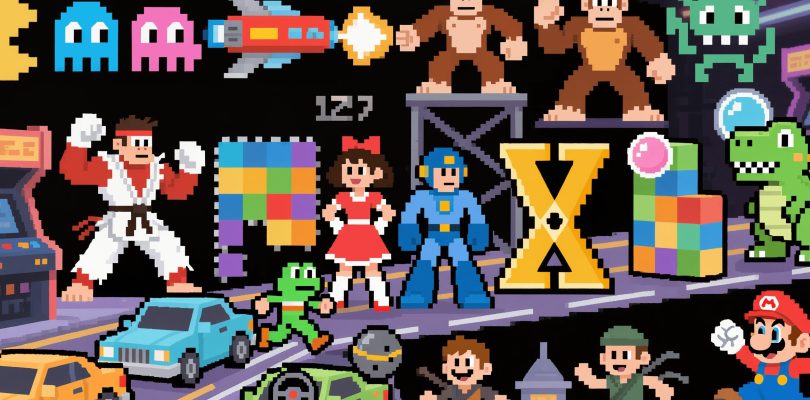The golden age of arcades gave us more than just quarters disappearing into cabinets—it created the foundation for modern gaming as we know it. These 15 revolutionary machines didn’t just entertain us; they fundamentally changed how we play. From groundbreaking mechanics to cultural phenomena, these are the retro arcade games that truly mattered.
15. Defender (1981)
Developer: Williams Electronics
Designer: Eugene Jarvis

With its side-scrolling action and complex controls, Defender represented a quantum leap in arcade difficulty and depth. Players piloted a spacecraft defending humanoids from alien abduction across a wraparound landscape—an innovative concept that expanded gameplay beyond a single screen.
The game’s control scheme (featuring five buttons plus a joystick) was revolutionary but punishing, creating a steep learning curve that somehow made success all the more satisfying. Defender pioneered the concept of a game world existing beyond the visible screen, setting the stage for expansive game environments in future titles.
Where to play now: Available on Atari Flashback collections, Midway Arcade Origins, and as part of various mini arcade replicas.
14. Dragon’s Lair (1983)
Developer: Advanced Microcomputer Systems
Publisher: Cinematronics

When Dragon’s Lair hit arcades in 1983, it looked nothing like its pixelated peers. This revolutionary LaserDisc game featured stunning hand-drawn animation by ex-Disney animator Don Bluth, bringing cinematic storytelling to arcades. Players guided knight Dirk the Daring through a series of quick-time events to rescue Princess Daphne.
At 50 cents per play (double the standard quarter), Dragon’s Lair still amassed crowds willing to pay premium prices for its groundbreaking visuals. While its gameplay was essentially a series of memorized reactions, its influence on merging animation and interactive entertainment cannot be overstated.
Where to play now: Available on Nintendo Switch, PlayStation 4, mobile devices, and through dedicated mini arcade cabinets.
13. Donkey Kong (1981)
Developer/Publisher: Nintendo

Before Mario was Mario, he was “Jumpman”—a carpenter navigating platforms to rescue his girlfriend from a barrel-throwing ape. Donkey Kong introduced precise platform jumping mechanics and multi-stage level design that revolutionized game structure.
This iconic cabinet marks several historic firsts: Nintendo’s first major arcade hit, legendary designer Shigeru Miyamoto’s debut title, and the introduction of gaming’s most recognizable character. The game’s success saved Nintendo of America from bankruptcy and established the narrative framework that would evolve into the Mario universe.
Where to play now: Nintendo Switch Online, Arcade Archives collection, and Donkey Kong/Mario retrospective collections.
12. Galaga (1981)
Developer/Publisher: Namco

Perfecting the space shooter formula established by its predecessors, Galaga added strategic depth to the alien-blasting genre. Its signature “challenging stage” bonus rounds and the high-risk, high-reward fighter capture mechanic created tense risk-assessment moments that kept players feeding quarters.
The distinctive enemy formations and behavioral patterns required players to learn and adapt—not just mindlessly shoot. Galaga’s precise controls and perfectly tuned difficulty curve make it perhaps the most balanced shooter of its era, explaining why original cabinets still appear in modern arcades.
Where to play now: Namco Museum collections across multiple platforms, arcade compilations, and mini arcade replicas.
11. Space Invaders (1978)
Developer/Publisher: Taito

The alien invasion that launched a gaming revolution, Space Invaders wasn’t just successful—it triggered a coin shortage in Japan and quadrupled sales of Atari’s home console when ported. Its brilliance lay in escalating tension: as you clear aliens, the remainder move faster, accompanied by an increasingly urgent heartbeat-like soundtrack.
Space Invaders pioneered the concept of the high score, transforming gaming into a competitive pursuit of numerical supremacy. Its simple yet addictive gameplay loop—shoot, dodge, repeat—established the fundamental grammar of action gaming that persists today.
Where to play now: Available on virtually every platform through various Taito collections and as standalone arcade ports.
10. Ms. Pac-Man (1982)
Developer: General Computer Corporation
Publisher: Midway/Namco

More than just a female reskin of an existing hit, Ms. Pac-Man improved upon its predecessor in every way. With four different mazes, smarter ghost AI, and randomized ghost movement that prevented pattern memorization, this sequel demanded genuine skill rather than rote learning.
The addition of intermission cutscenes showing Ms. Pac-Man and Pac-Man’s courtship and family made this one of the first games with narrative progression. Originally developed as an unauthorized enhancement kit called “Crazy Otto,” Ms. Pac-Man’s superior design is why many gaming historians consider it the greatest arcade game ever made.
Where to play now: Namco Museum collections, Arcade1Up cabinets, and included in many retro compilations.
9. Mortal Kombat (1992)
Developer/Publisher: Midway Games

When Mortal Kombat‘s digitized actors started tearing out spines and ripping off heads, it didn’t just shock parents—it changed the gaming industry forever. The controversial fighting game’s realistic violence sparked U.S. Congressional hearings, ultimately leading to the creation of the ESRB rating system.
Beyond the blood, Mortal Kombat’s unique five-button control scheme, character-specific special moves, and hidden Fatality finishers created a gameplay experience distinct from Street Fighter’s technical approach. The game spawned a multimedia empire and proved that gaming could embrace adult themes and still achieve mainstream success.
Where to play now: Mortal Kombat Arcade Kollection, included in various Midway compilations, and through dedicated Arcade1Up cabinets.
8. Asteroids (1979)
Developer/Publisher: Atari

Vector graphics never looked as good as in Asteroids, where precise line-drawn shapes created a uniquely crisp visual experience. Players controlled a triangular spaceship in 360 degrees of movement with realistic physics—thrust, rotation, and momentum all factored into survival.
Asteroids was the first game to allow players to input their initials for high scores, cementing the competitive arcade culture. Its elegant risk-reward design encouraged skilled players to delay clearing levels to build higher scores, introducing strategic depth beyond mere survival.
Where to play now: Atari compilations across multiple platforms, Atari Flashback consoles, and various arcade services.
7. Street Fighter II (1991)
Developer/Publisher: Capcom

No game revolutionized competitive play quite like Street Fighter II. With eight playable characters possessing unique fighting styles, special moves, and personalities, it established the template for character-based fighting games that persists today.
Street Fighter II cabinets were social hubs where crowds gathered to watch skilled players, with winners staying on and challengers placing quarters on the cabinet to claim “next.” The game’s precisely balanced mechanics created a skill ceiling so high that even today, players discover new techniques and combos in this 30+ year-old game.
Where to play now: Street Fighter 30th Anniversary Collection across all major platforms, Capcom Arcade Stadium, and through specialty arcade cabinets.
6. NBA Jam (1993)
Developer/Publisher: Midway

“He’s on fire!” NBA Jam‘s over-the-top announcer and exaggerated two-on-two basketball action proved sports games didn’t need simulation-level realism to succeed. With flaming basketballs, shattered backboards, and players jumping impossibly high, it brought arcade spectacle to sports gaming.
The game’s personality-driven approach—featuring digitized NBA players with big heads and superhuman abilities—created a blueprint for accessible sports titles. Its four-player cabinet design encouraged team play, while hidden characters (including political figures like Bill Clinton) rewarded experimentation with button combinations.
Where to play now: NBA Jam: On Fire Edition on modern consoles, Arcade1Up cabinets, and through various Midway collections.
5. Teenage Mutant Ninja Turtles (1989)
Developer: Konami

When Konami’s four-player Teenage Mutant Ninja Turtles cabinet hit arcades, it redefined cooperative gameplay. Each player could select their favorite turtle—each with slightly different stats—and battle through side-scrolling beat-em-up action together.
The cabinet’s unique design, accommodating four simultaneous players shoulder-to-shoulder, transformed arcades into social experiences. Its combination of a popular license with accessible yet challenging gameplay created the perfect storm of commercial appeal. The game’s influence extended to home consoles, where its formula inspired countless beat-em-ups.
Where to play now: Teenage Mutant Ninja Turtles: The Cowabunga Collection on modern platforms, and dedicated arcade cabinets.
4. Centipede (1981)
Developer/Publisher: Atari

Centipede’s unique control scheme—it used a trackball instead of a joystick—allowed for precision movement that felt revolutionary. As players navigated a mushroom field shooting at a descending segmented centipede, the game’s speed and challenge progressively increased.
Notably, Centipede was co-designed by Dona Bailey, one of the industry’s first female programmers, who created the game’s distinct pastel color palette specifically to appeal to women players. This pioneering approach to gender-inclusive design helped Centipede attract a broader audience than many of its contemporaries.
Where to play now: Atari Flashback collections, Atari Arcade compilations, and through dedicated mini arcades.
3. Pac-Man (1980)
Developer/Publisher: Namco

The yellow circle that ate the world, Pac-Man transcended gaming to become a cultural icon. Unlike the space shooters dominating arcades, its non-violent gameplay about munching dots and avoiding ghosts appealed to unprecedented demographic breadth.
Designer Toru Iwatani specifically created Pac-Man to attract women to arcades, drawing inspiration for the character’s shape from a pizza with a slice removed. The game’s character-driven design—with four distinct ghost personalities and intermission cutscenes—laid groundwork for narrative in retro arcade games. With over 400,000 cabinets sold worldwide and endless merchandising, Pac-Man remains gaming’s most recognizable ambassador.
Where to play now: Available on virtually every gaming platform ever created, from dedicated handhelds to console collections to mobile phones.
2. Pong (1972)
Developer/Publisher: Atari

The table tennis simulation that started it all, Pong wasn’t the first video game—but it was the first to achieve mainstream commercial success. Its simple two-line paddles and square ball belied surprising depth, as players developed strategies involving angles and timing.
The original Pong prototype was installed in Andy Capp’s Tavern in Sunnyvale, California, where it stopped working after a few days. The problem? The coin box had overflowed with quarters. This proof of commercial viability launched Atari and the entire arcade industry, transforming electronic gaming from laboratory curiosity to profitable business.
Where to play now: Included in countless Atari compilations, playable online through various emulators, and available on dedicated mini consoles.
1. Tetris (1984)
Developer: Alexey Pajitnov
Arcade Version: Atari Games (1988)

Though initially created on a Soviet computer, Tetris reached its addictive potential in arcades, where its elegant simplicity masked incredible strategic depth. Arranging falling tetrominoes into complete lines created a “just one more game” compulsion unmatched in gaming history.
The game’s psychological grip has been scientifically studied—players report seeing falling blocks in their peripheral vision or dreaming about the game, a phenomenon called the “Tetris Effect.” Its universal appeal transcends cultural and language barriers, making it perhaps the most accessible game ever created. Decades later, competitive Tetris players still discover new techniques and push human reaction times to their limits.
Where to play now: Every gaming platform imaginable, from specialized competitive versions to mobile apps to modern console iterations like Tetris Effect.
What Makes These Games Timeless?
What unites these 15 groundbreaking titles isn’t just nostalgia—it’s their perfect balance of “easy to learn, difficult to master” design philosophy. These games created new genres, introduced innovative mechanics, and established gaming conventions we take for granted today.
Which retro arcade games would you add to this list? Did your favorite make the cut? The beauty of arcade gaming history is that there’s always another cabinet with a different experience waiting around the corner—just like in the arcades of yesteryear.
P.S.: Here is a list of best-selling arcade games: https://en.wikipedia.org/wiki/Golden_age_of_arcade_video_games

